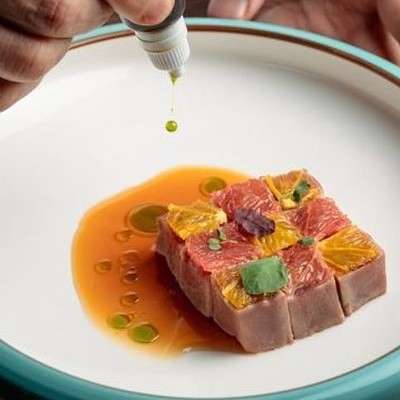First, a quick and dirty lesson on the varieties of chocolate:
- Unsweetened chocolate is all cacao and no sugar, making it incredibly bitter. It is also known as baking chocolate and is usually found in the baking aisle of grocery stores in the forms of blocks or bars. The sugar is added separately when baking brownies or cakes.
- Bittersweet, extra dark, semi-sweet, and dark chocolate, at least in the U.S., are often used interchangeably and should contain no less than 35 percent cacao. (Bittersweet and extra dark tend to have more cacao, while semi-sweet and dark have more sugar.) Unlike the cacao, however, sugar content is not regulated so sweetness may vary between brands.
- Milk chocolate contains milk (duh) either in the form of powder, liquid, or condensed.
- White chocolate uses cocoa butter instead of cocoa solids as its main ingredient. As a result, white chocolate lacks many of the health benefits found in darker chocolate.
Now that we've got that out of the way, let's dive into the most delectable of chocolates: the dark variety.
What is it?
Chocolate is made from the fruit's seed of the cacao tree and was discovered by European settlers who came by way of the Gulf of Honduras. Cacao trees grew in South America and were a large part of the Aztec and Mayan cultures -- Montezuma, the Aztec king, is said to have drunk liquid chocolate from a golden goblet.
So why this long history of affection for chocolate? Modern scientific studies show chocolate has been known to release endorphins, serotonin, and phenylethylamine in our brains upon consumption which combine to act as a stress reliever and mood lifter. According to CNN, chocolate is good for our hearts and blood pressure, too; the flavonoids found in chocolate increase blood flow, decrease blood clots, and lower both blood pressure and bad cholesterol. And as if that weren't enough, chocolate has been shown to improve the skin, memory, and muscular system.
Maybe Montezuma needed a mood booster after dealing with those conquistadors.
How do I use it?
Chocolate can be eaten plain to satisfy a sweet tooth. It can be baked into a dessert, melted into a fondue, made into a Mexican mole (pronounced "moh-leh") sauce.
Where can I find it?
In the baking or candy aisle of most grocery stores.
Recipes
Here are some recipes guaranteed to score you some points with your valentine. Single? Indulge yourself. You don't need a partner to eat happily.
Chocolate Covered Strawberries This recipe from the Food Network is both tasty and pretty.
Chocolate Fondue Simply Recipes shows you how to make this interactive dessert at home and even offers tips on how to dress up your fondue.
Happy Valentine's Day! What do you do with your dark chocolate?
Follow Eating Our Words on Facebook and on Twitter @EatingOurWords





